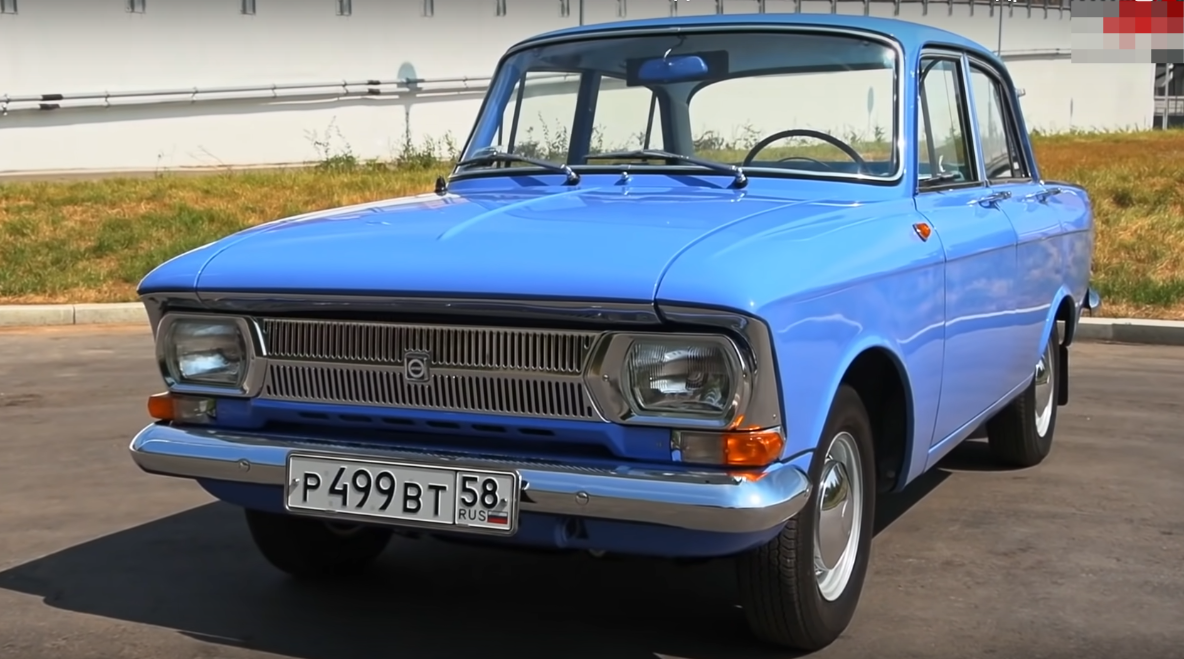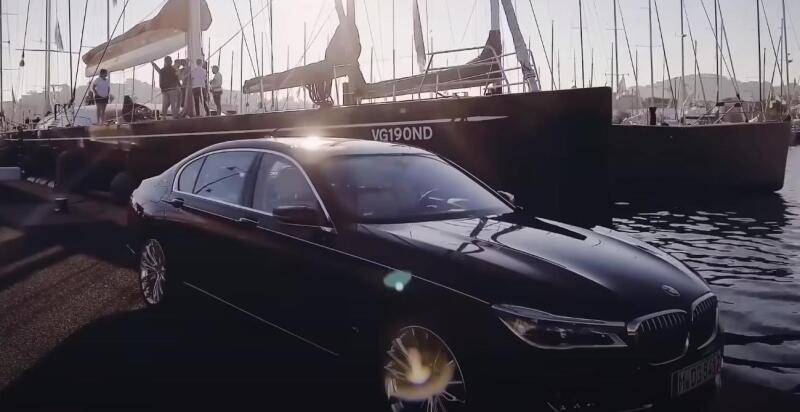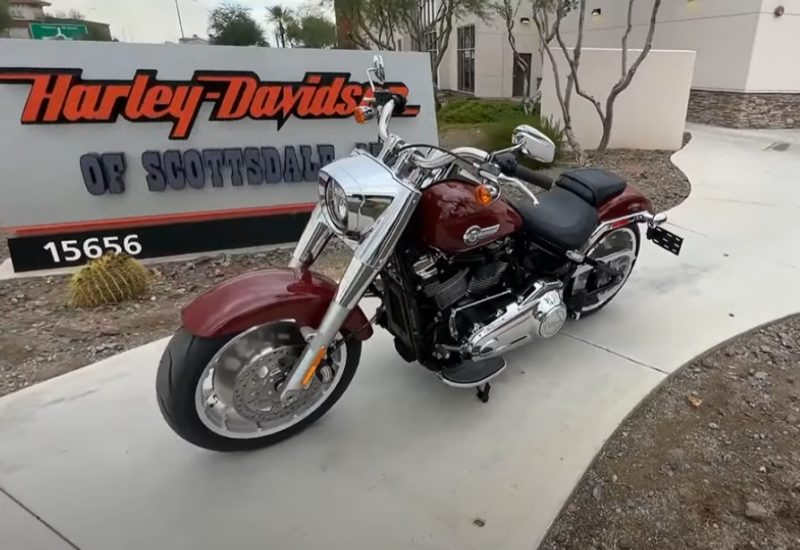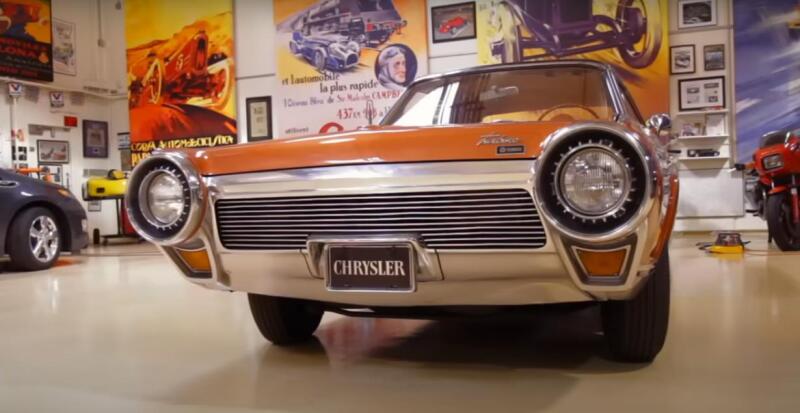 Don't believe your eyes! Written "IZH", but it's still "Moskvich". Photo: youtube.com
Don't believe your eyes! Written "IZH", but it's still "Moskvich". Photo: youtube.comBut the reputation of "Moskvich" looked ambiguous. Being slightly larger than the Zhiguli, it was considered less prestigious. Modern technical solutions were combined in it with dense archaism. The bold and bright design was shattered by the terrible, even by Soviet standards, build quality. The comfortable suspension was “zeroed out” by the lack of sound insulation. For some it's a mystery, for others it's a misunderstanding. The most underestimated Soviet car by public recognition, at the same time - one of the most successful in the West.
"Moskvich 412"
The car was introduced in 1967, but the actual start of production happened already in 1968. Moreover, at two plants at once - the Moscow MZMA, which was renamed AZLK just in the 68th, in honor of the 50th anniversary of the Komsomol, and at the Izhevsk automobile plant IZH.
 This copy began its life in the early 70s in Krasnovodsk, Turkmen SSR. In 1988, he moved to central Russia and has happily lived there ever since. Photo: youtube.com
This copy began its life in the early 70s in Krasnovodsk, Turkmen SSR. In 1988, he moved to central Russia and has happily lived there ever since. Photo: youtube.comThey say that Dmitry Ustinov, the future Minister of Defense of the USSR, and then the Secretary of the Central Committee, who oversaw the defense industry, insisted on building a plant in Izhevsk. And exactly for this reason, throughout its entire Soviet history, IZH belonged to the defense department, not subordinate to the ministry of the automotive industry.
 The gas tank filler is hidden behind the rear license plate. Photo: youtube.com
The gas tank filler is hidden behind the rear license plate. Photo: youtube.comTo call the "412th" a completely new model would be wrong. The main idea was to install a new, more modern engine in the old body from Moskvich 408. Subsequently, over the course of many years of production, the model evolved, trying on a new interior, new units and external design elements, changing its name, turning from the "412th" into the "Moskvich-2140".
Мотор
The main innovation that distinguished the Moskvich 412 from its predecessor was the engine. The top-mounted overhead valve engine with a timing chain drive and spherical combustion chambers was fundamentally different from what was on the 408th.
 The engine was distinguished by enviable reliability and good maintainability. Photo: youtube.com
The engine was distinguished by enviable reliability and good maintainability. Photo: youtube.comAccording to popular belief, the designers copied the BMW engine. Indeed, a similar power unit of the Bavarian company was taken as a guide. However, in the course of development, so many changes were made to the design of the "Moskvich" motor that it is incorrect to talk about direct copying.
The power of the "412th" motor was, according to the passport, 75 liters. With. It is according to the passport, because, according to some sources, the official power was deliberately underestimated! This was done with an eye to the unstable quality of production. The designers wanted to be sure that any randomly selected motor installed on the stand would be guaranteed to give out its 75 “horses”.
In fact, the "engine" was easily boosted and, after appropriate refinement, developed 100-120 hp. With. Thanks to this feature, the "412th" engine was extremely popular with athletes. And not without reason.
 Under the hood of "Moskvich" is very spacious. All units are literally in the palm of your hand. Photo: youtube.com
Under the hood of "Moskvich" is very spacious. All units are literally in the palm of your hand. Photo: youtube.comThe K-126 carburetor, which was installed initially, became a headache for car owners because of its capriciousness and unreliability. Subsequently, the Muscovites began to install a much less problematic DAAZ carburetor from the Zhiguli.
The four-speed gearbox migrated from the "408th" model, but the gearbox drive moved from the steering column to the floor. The morally obsolete unit was slightly “shamanized” for the new car, in particular, synchronizers appeared at all forward speeds. However, the box still did not fit well with a modern engine. Short-stroke, clarity of inclusion - such concepts, apparently, did not appear in the terms of reference when working on this unit.
Body
As we said above, the body was originally taken from the "408th" model. Despite the fact that it was drawn back in 1959, by the end of the 60s it looked quite modern. One might even say bold and refined. Compared to the FIAT-124, which will form the basis of the Zhiguli that appeared soon, from an aesthetic point of view, the Moskvich-412 looks much more interesting.
 Well, he's handsome, isn't he? Photo: youtube.com
Well, he's handsome, isn't he? Photo: youtube.comPlenty of chrome detailing, dashing fins on the rear fenders (hello America!), a predatory reverse slope of the grille (no worse than a BMW), elegant stamping along the entire body that visually lengthens the car and makes the silhouette more impetuous.
The only pity is that this whole puzzle was assembled by Soviet hands at a Soviet factory, where the concept of "build quality" was present only as a curse. Body gaps are such that through them you can look into the underworld, the doors hung crookedly even on new cars and desperately did not succumb to adjustment. Everything that could play - backlash, everything that could creak - creaked.
By the way, it was believed that the Muscovites from Izhevsk were assembled better than at AZLK. The reason was the defense status of the IZH plant and the naive confidence of the layman that we can make tanks and missiles with high quality. Perhaps the control in Izhevsk was indeed better, but the hands, accustomed to assembling brutal military equipment, did not cope well with such a delicate matter as a car.
During the production process, changes were made to the design and design. So, round headlights at AZLK were replaced with rectangular optics manufactured by the GDR.
 Rectangular headlights were supplied from socialist Germany and were installed mainly on cars manufactured at AZLK. Photo: youtube.com
Rectangular headlights were supplied from socialist Germany and were installed mainly on cars manufactured at AZLK. Photo: youtube.comThe Izhevsk plant also produced "Moskvichs" with a German look, but in much smaller volumes. Firstly, because of the shortage of components, and secondly, because of the inertia of the military in relation to modernization. As a result, Izhevsk cars with rectangular headlights were mainly exported. And cars with old round ones were supplied to the domestic market.
Salon
The interior of the Moskvich also constantly evolved. The metal front panel has been wrapped in soft plastic over time. The archaic “tidy” was replaced with a more modern one, with round dials (but only on AZLK).
 On the early "Moskvich" the front panel was entirely metal. Photo: youtube.com
On the early "Moskvich" the front panel was entirely metal. Photo: youtube.comToo bad they didn't do anything to the stove. "Moskvich" did not favor passengers with warmth, so taking off outerwear in the cabin in winter was fraught with colds.
"Music" deserves separate words. The radio receiver was made easily removable, while on some modifications it was locked with a separate key! The device had its own antenna and a clip-on unit with batteries. That is, he could work completely autonomously - this was not the case in any other Soviet car at that time. And later, it seems, too.
Suspension
The Moskvich chassis was built according to the traditional scheme for the 60s - triangular levers in front and springs in the back. The bias in the settings was clearly in the direction of comfort. And indeed, "412" was very smooth on the go. If not for the soundproofing, which was virtually non-existent. They said that "Moskvich" is a car that is noisier inside than outside.
 The rear seats are cramped. primarily due to the short wheelbase (2400 mm) and the lack of space in width. Photo: youtube.com
The rear seats are cramped. primarily due to the short wheelbase (2400 mm) and the lack of space in width. Photo: youtube.comBrakes - drum on all wheels. Compared to the "408th", the new model received a hydraulic vacuum brake booster. True, in fact it turned out that the unit was very unreliable and regularly leaked. But still, with a brake booster is better than without it, right?
Modifications
It is difficult to talk about the modifications of the Moskvich, since changes to the design were made constantly. Moreover, both at AZLK and in Izhevsk, the cars evolved according to their own scenario. That is, the upgrades carried out on the Moscow conveyor to the Izhevsk machine, if they got there, then not immediately.
 "Muscovites", produced in different years and at different factories, differed from each other both in design and technically. Photo: youtube.com
"Muscovites", produced in different years and at different factories, differed from each other both in design and technically. Photo: youtube.comGradually changing and developing, Moskvich-412, as a result, turned into the 2140 model, although structurally, at the core, it was the same car.
Over time, a modification of the Moskvich with a hatchback body (Combi) and a cargo-passenger version of a pickup truck, the famous Heel, saw the light of day. But they were already considered independent models.
Export history
One may be surprised, but "Moskvich-412" was one of the most successful export cars of the Soviet Union. Moreover, it was bought not only from the fraternal countries of the socialist camp, but also from "our Western partners", as they say now. For example, the UK market ate up to 3,5 thousand Muscovites annually! And these, in those days, but in a spoiled and rich European country, are very decent numbers.
 The key to the export success of "Moskvich-412" is a modern and powerful engine. Photo: youtube.com
The key to the export success of "Moskvich-412" is a modern and powerful engine. Photo: youtube.comMoreover, the production of "Moskvich" was organized abroad! In the Bulgarian Lovech at the Balkan plant, since 1969, about 200 thousand "412s" have been assembled.
Also, Scaldia-Volga SA in Belgium was engaged in screwdriver assembly, along the way producing "improving" to the captious European taste.
 The trunk is spacious, but unpretentious. There is no space for a spare wheel. Photo: youtube.com
The trunk is spacious, but unpretentious. There is no space for a spare wheel. Photo: youtube.comHowever, the rapid obsolescence of the model and the famous Soviet quality eventually reduced sales in Western Europe to nothing. And no one asked the brothers in the socialist camp - "Muscovites" were delivered to them regularly.
Finale
"Moskvich-412", with modern and progressive ideas embedded in it, flashed for a short time as a bright star in the automobile sky. But this star could not flare up. Or rather, they didn't give it to her.
And in the memory of the townsfolk, the "412th" remained a dense pensioner's car. And no one remembers about sporting successes in international competitions, the London-Sydney rally in 1968, the London-Mexico City rally in the 70th. And they were!
But the old man is still alive! No, no, yes, in the vastness of our vast ancient "412th" comes across. As a rule - mortally tired, beaten by life. But sometimes - carefully restored, elegant and fresh. Like our pictures.










